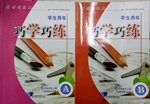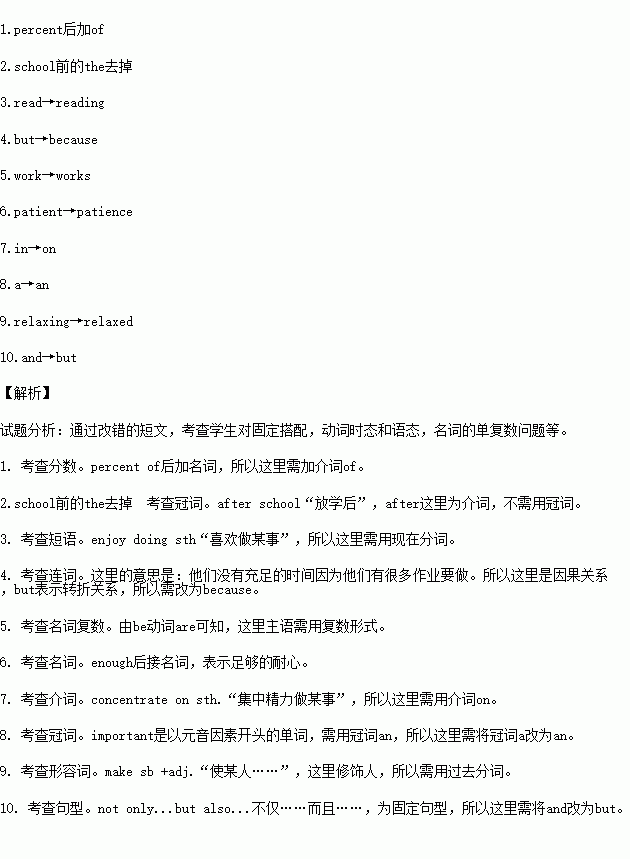题目内容
第一节 短文改错
修改以下文章,文中共有 10 处语言错误,每处错误仅涉及一个单词的增加、删除或修改。
注意: 1、答案请写在答题卷上;
2、只允许修改 10 处,多者(从第 11 处起)不计分;
3、每处错误及其修改均仅限一词;
4、答题符号、格式要规范:
增加:在缺词处加一个漏字符号(∧),并在其下面写出该加的词。
删除:把多余的词用斜线(\)划掉。
修改:在错的词下划一横线,并在该词下面写出修改后的词。
Our school has had a survey on reading. It shows that 55 percent the students spend their time reading textbooks after the school. Only 10 percent enjoy read literature. Why? They don’t have enough time but they have too much homework to do. Some complain that literary work are so thick that they have hardly enough patient to finish them. Others who only concentrate in how to get high scores simply admit that reading literature won’t help them with their exams. What’s more, some students show no interest in literature. In fact, books play a important role in our life. Not only can reading make us relaxing, and it also helps us learn the customs and cultures in the past and at present, at home and abroad.
 巧学巧练系列答案
巧学巧练系列答案
